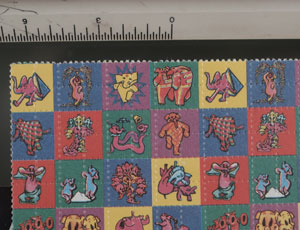What is LSD?
LSD, or lysergic acid diethylamide, is a hallucinogen and is one of the most potent, mood-changing chemicals on the street. Manufactured from lysergic acid, it is produced in crystal form. These crystals are then converted to a liquid form for distribution.
What does LSD look like?
LSD comes in capsules, tablets and liquid form. It is an odorless, colorless substance with a slightly bitter taste. LSD is often added to absorbent paper and divided into small, decorated squares. Each square represents one dose.
How is LSD abused?
LSD is abused orally.
How does LSD affect a person?
The effects of LSD are highly unpredictable. The amount taken, along with the user’s mood, personality and surroundings, all impact the effects. LSD impairs perception of depth, time, environment and body image. LSD causes acute anxiety, depression, vision changes and extreme mood swings. Flashbacks have been reported days, even months, after use.
The physical effects of LSD include dilated pupils, higher body temperature, increased heart rate/blood pressure, sweating, loss of appetite, sleeplessness, dry mouth and tremors.
Drugs with similar effects include PCP, mescaline and peyote.
What are the health effects/risks of using LSD?
LSD users can develop a tolerance necessitating higher does over time to achieve the same high. Usage impairs the ability to make sound judgments and see common dangers. Adverse side effects include confusion, paranoia and emotional breakdowns.
